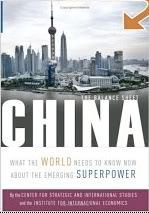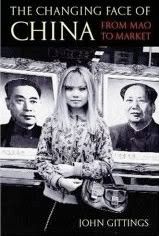Too much of a good thing for China
Mar 15, 2007
BEIJING - Senior Chinese officials say it will take time to reduce China's trade surplus as latest statistics show that the country's trade surplus in the first two months of this year reached US$39.61 billion, more than triple that in the same period last year.
The total value of China's imports and exports hit $297.81 billion in the first two months, surging 31.6% year-on-year, according to the latest statistics released by the General Administration of Customs.
Of the total, the value of exports reached $168.71 billion, leaping 41.5%, while the value of imports hit $129.1 billion, climbing 20.6%. In February alone, the import and export value amounted to $140.4 billion, rising 32.9%. This included exports of $81.1 billion, soaring 51.7%, and imports of $58.34 billion, climbing 13.1%.
The trade surplus in February reached $23.76 billion, and that in January-February came to $39.61 billion. According to data from the Ministry of Commerce, China's trade surplus in the first months of 2006 totaled $12.02 billion.
General trade made up a bigger proportion of China's foreign trade in the January-February period, while the proportion of processing trade declined. Statistics show that China's import and export through general trade hit $133.76 billion in the period, rising 39.8%, 17.5 percentage points higher than growth in the year-earlier period, and making up 44.9% of total foreign trade in the same period, 2.6 percentage points more than the proportion in the same 2006 period.
Meanwhile, import and export through processing stood $135.17 billion, rising 23.9% and making up 45.4% of total trade, which declined 5.6 percentage points and 2.8 percentage points respectively as compared with the growth in the year-earlier period.
At the same time, bilateral trade between China and its major trade partners has maintained rapid growth since this year, with the growth of bilateral trade between China and its four major trade partners all exceeding 20% in the first two months of this year.
According to customs statistics, the European Union (EU) remains China's largest trade partner, with Sino-EU bilateral trade volume topping $51.08 billion in January-February, surging 42.7% year-on-year, and the growth rate was 23.3 percentage points higher.
The United States is China's second-largest trade partner, with Sino-US bilateral trade volume totaling $43.86 billion in the two months, up 32.2% year on year, and the growth rate increased 6.9 percentage points.
Japan is China's third-largest trade partner, with a bilateral trade volume of $33.49 billion, up 22.4% year on year, which was 10.7 percentage points higher than that during the same period last year.
Bilateral trade volume between China and the Association of South East Asian Nations (ASEAN) amounted to $27.68 billion, up 30% year on year. ASEAN continues to be China's fourth-largest trade partner.
Customs released the latest trade statistics on Monday as two senior Chinese officials said it will take time to adjust the trade imbalance between China and some of its trade partners.
"China wants to reduce its trade surplus, but we cannot imagine the issue being solved in the short term or by measures solely in the trade sector," said Commerce Minister Bo Xilai.
"The surplus does not come solely or mainly from trade, but is caused by the overall structure of the industrial sector and international economy."
China's trade surplus totaled $178 billion for last year. And the country recorded a trade surplus of $15.9 billion in January and $23.8 billion in February this year.
Zhou Xiaochuan, governor of the People's Bank of China, the country's central bank, said the most effective approach to addressing the imbalance would be to adjust the structure of the country's economy.
Some domestic measures that have been floated include expanding consumption and developing the country's service industry. Other steps include increasing imports and encouraging Chinese companies to invest overseas, he said.
"It will take time to adjust. It should be a slow, gradual process," he said. "But an adjustment of this sort should be essential to addressing the imbalance."
As an auxiliary tool, modifying the country's exchange rate policy could also have some effect in adjusting the balance between exports and imports, he said.
The country's trade surplus has been a source of friction between China and its trading partners. Bo said that last year 37% of the anti-dumping cases in the world targeted China.
These cases, together with anti-subsidy cases, affected 8,500 Chinese enterprises and 500,000 workers. "We have to take the issue seriously," he said. Bo said China hopes to resolve these disputes through consultations.
"But we should also respect our trading partners' decisions to take their concerns to the World Trade Organization's dispute-settlement system if they would like to do so," he added.
(Asia Pulse/XIC)
Link




0 Comments:
Post a Comment
Subscribe to Post Comments [Atom]
<< Home